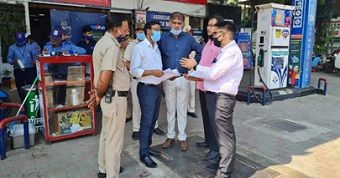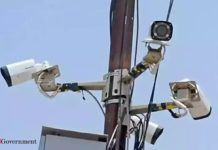With the advancement in technology, law enforcement agencies, especially the police, have begun to employ surveillance devices to aid in maintaining law and order. Traffic police employ a network of CCTV cameras to monitor lawbreakers. However, the police in Delhi have adopted a unique approach to apprehend vehicles that lack a Pollution Under Control certificate by utilising CCTV cameras at fuel pumps.
As part of a new initiative, the Parivahan Department of the Government of Delhi has commenced monitoring CCTV cameras at fuel pumps in Delhi. This pilot project, initially implemented at four fuel pumps in Delhi, may soon be expanded to cover the entire state.
In this operation, the police team reviews CCTV footage of individuals who unsuspectingly visit fuel pumps to refill their vehicles. Using the registration details, the police then verify all information, including the Pollution Under Control (PUC) certificate.
The police have refrained from installing their own cameras at these locations and are instead utilising the existing CCTV footage from the fuel pumps. The identities of the fuel pumps currently participating in the pilot project have not been disclosed.
In the coming weeks, the number of such fuel pumps under surveillance will increase to approximately 500 across the national capital. The systems will be upgraded to artificial intelligence enabled cameras to minimise human intervention.
In most major cities, a network of CCTV cameras is now closely monitored by a team of police personnel. The police issue challans based on violations, tracking the registration numbers. However, numerous online challans are issued incorrectly due to faulty number plates. These erroneous challans can be challenged through the redressal portal of the traffic police. Recently, the government and authorities have raised fine amounts to reduce violations and enhance road safety.
India has one of the highest rates of road accidents in the world, with a high ratio of fatal accidents. Many road users lose their lives due to reckless driving and failure to follow traffic rules. The objective of surveillance is to reduce the number of people engaging in dangerous manoeuvres on the roads. The police have even initiated a crackdown on vehicles lacking rearview mirrors or failing to use them. In Hyderabad, the police have started issuing challans to two-wheeler owners who do not have mirrors installed, and similar measures are expected to be implemented in other cities in the near future.








